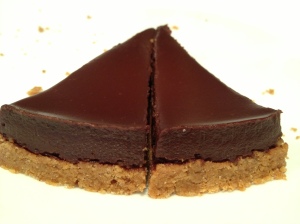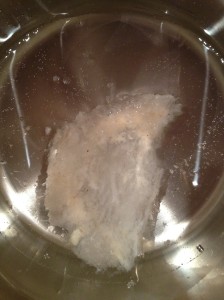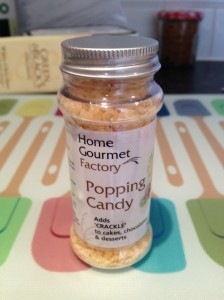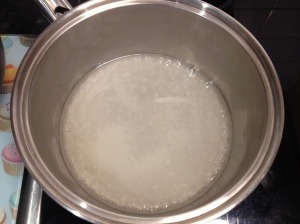One of my dearest friends asked me to bake a cake for her 30th birthday party. We decided on chocolate since it’s always a crowd pleaser.
One of the chocolate cakes on my “to bake” list was Heston’s Exploding Chocolate cake. Get the recipe here
I ABSOLUTELY loved the idea of the cake, passion fruit and chocolate is a match made in heaven! It’s one of my favorite combinations, the tartness of the passion fruit cuts through the richness of the chocolate and gives it that extra ooomph of flavour and aroma which keeps you wanting one bite more! Also, I had the popping candy leftover from a previous recipe.
I am really glad I tested the cake recipe before the actual day, the cake was disappointing because it was just ok. I followed the instructions to a tee. The cake is fairly simple and straightforward to make if you omit spraying the surface with liquid chocolate (I was planning dust the surface with cocoa). The taste however was not what I was expecting! The passion fruit flavour and aroma was too weak that it just ended up tasting like a slightly tart chocolate ganache with a cheesecake base.
My husband said it was ok but could be improved on, he suggested changing the base and commented that the texture of the ganache was a like a thick ganache custard hybrid which is what you might expect in a chocolate tart but not what you expect in a chocolate cake, one would expect a lighter mousse / Bavarian cream texture.
Conclusions:
1. One of the reasons for this maybe that the amount of passion fruit pulp. I bought 6 individual large passion fruits from waitrose but I would probably describe the size as medium. The recipe calls for pulp of 6 passion fruits but failed to give the weight of pulp. Passion fruits can vary in size, variety and even the amount of pulp. I went through a passion fruit phase and made cakes, desserts, macarons, mousse, etc with passion fruits and realized that even though the size of the fruit looks identical, the amount of pulp contained in that fruit can really vary! When you pick it up, some are lighter and are half empty when you slice it open whereas others will be full of pulp. The weight of pulp for 6 fruits I used (incl. seeds) was about 120g.
2. The small amount of custard added to the recipe does dilute some of the flavour
3. The milk and dark chocolate mix is about right, sweetness is correct too.
4. The recipe uses a 15cm cake ring, I only have a 20cm cake ring and was one of the reasons I tested the recipe, so I would know how much to increase the recipe by to suit my cake ring. The crumb base thickness was perfect for a 20cm cake ring (which means it would have been too thick for a 15cm diameter ring), but I would probably need to double the ganache recipe to get the desired height.
I ended up making a different chocolate cake for my friends party. A 30th birthday of one of my dearest friends deserved a show stopper type cake and this wasn’t going to be it. I just wanted to share this experience so that if you decide to try the recipe, you might make your own adjustments to suit your taste preference.
I hope you don’t get the wrong idea, the recipe is by no means bad or weird tasting. It’s just not what one expects from something labelled a cake or gateau. I think this would make an ace chocolate passion fruit tart! Change the shortbread crumb base to a short crust or sweet shortcrust pastry and then fill with this ganache and it would be pretty darn awesome!


























